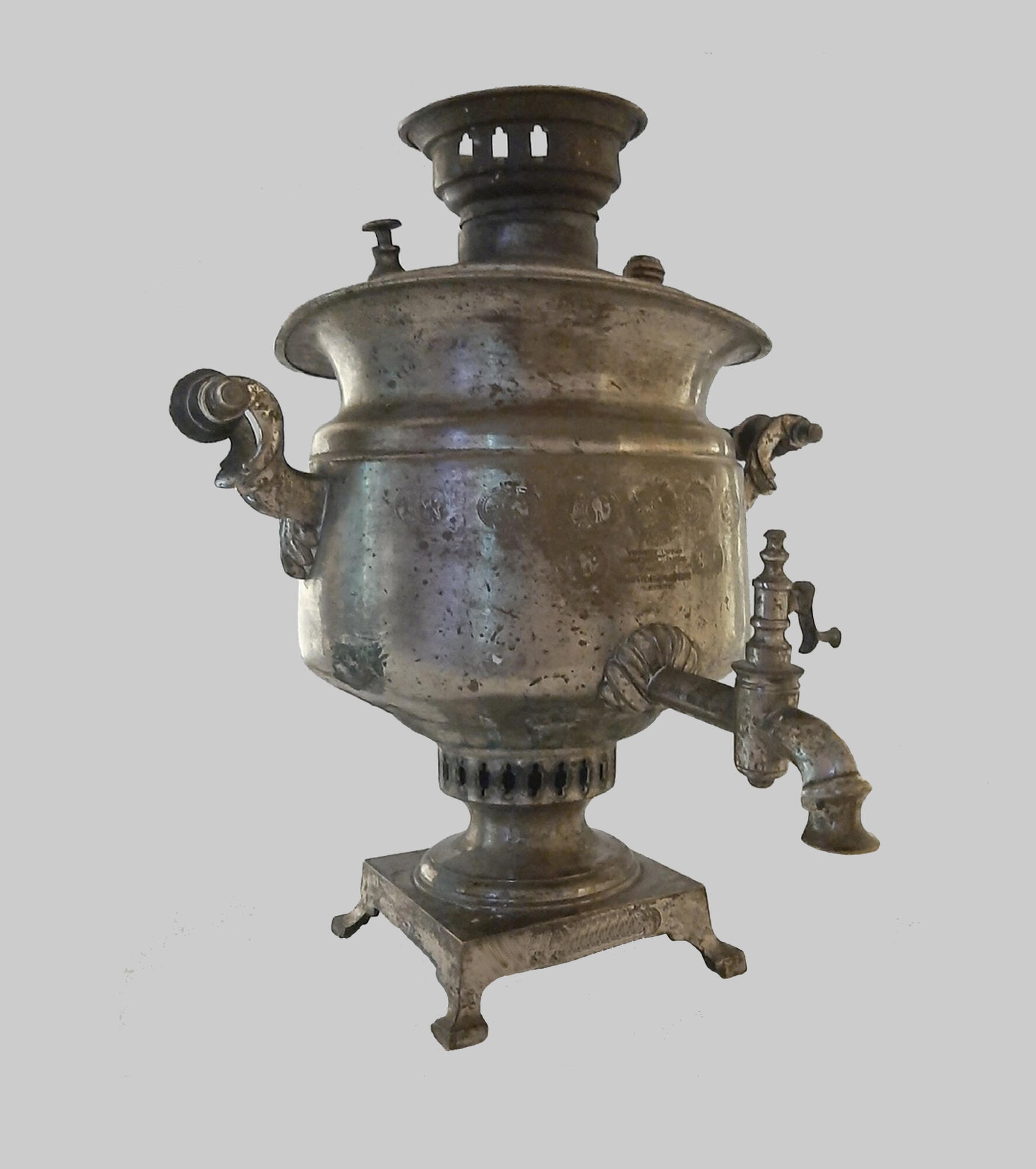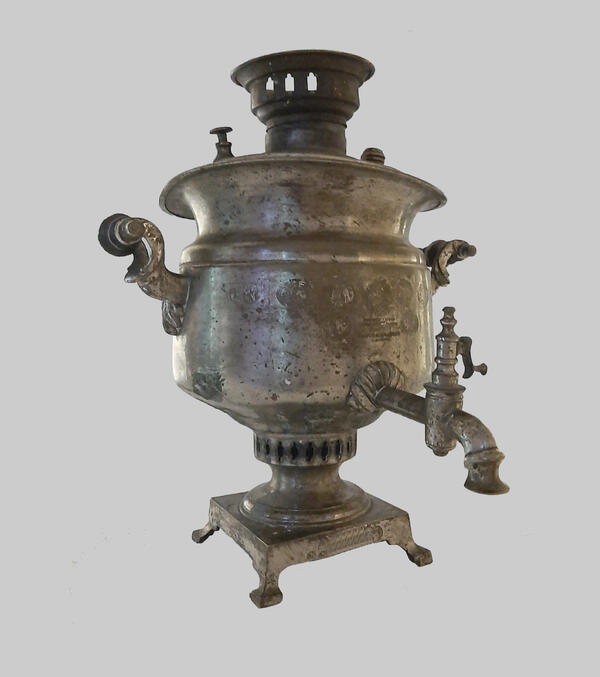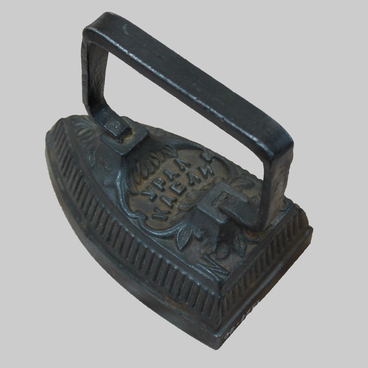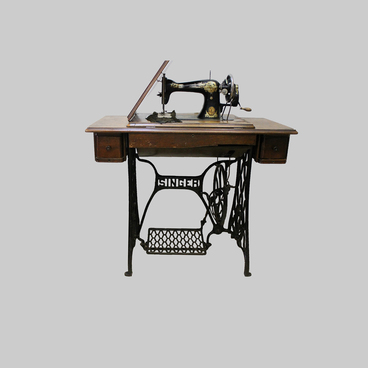The charcoal samovar, which is kept in the collection of the Local History Museum of Kopeysk City District, was produced in 1889 at the factory of the Batashev merchants. At the base of the samovar, there is a square tray with stepped legs. The fan (neck) and the burner are decorated with shaped slots. The lid of the samovar has two handles and a shower head, and the shaped handles are also equipped with wooden hand grips. On the cylindrical body, there are impressions of medals and the stamp: ‘Partnership of the Steam Samovar Factory of Heirs to Vasily Stepanovich Batashev in the City of Tula’.
At the end of the 19th century, there were more than ten factories of Batashev merchants in Tula. The largest of them appeared in 1840. At the beginning of the 20th century, the factory of Vasily Batashev’s heirs produced 54 different styles of samovars. The best in quality and finish, they were especially appreciated and quickly sold out, thus bringing a large income to the manufacturer. No Russian exhibition in Russia and abroad was complete without the Tula samovar and without the products of the famous Batashev factory.
In the second half of the 19th century, the company’s products repeatedly received medals, including gold medals. Medals from all-Russian and world exhibitions increased the cost of the product. Such exhibitions were organized in major cities once every ten years. Not all manufacturers were allowed to participate in them, but only those whose products met high requirements, i.e. being of high quality and beautifully made.
The demand for samovars was increased, and mass production started. For this reason, the manufacturers unified the forms and decor of the samovar. The main types were ‘vases’, ‘glasses’, and cylindrical ‘cans’. They could be found in the families of workers, well-to-do peasants, in merchant houses, in inns, in tea houses, and taverns.
The samovar has been considered a traditional Russian symbol of hospitality for almost three centuries, and tea drinking using the samovar is one of the most striking and revealing features of Russian traditional life. The samovar was not an ordinary household item, but a kind of personification of prosperity, family comfort, and well-being. It was included in the maiden’s dowry, passed down by inheritance, and given as a gift. Carefully polished, it was displayed in the most prominent and honorable place in the room.
At the end of the 19th century, there were more than ten factories of Batashev merchants in Tula. The largest of them appeared in 1840. At the beginning of the 20th century, the factory of Vasily Batashev’s heirs produced 54 different styles of samovars. The best in quality and finish, they were especially appreciated and quickly sold out, thus bringing a large income to the manufacturer. No Russian exhibition in Russia and abroad was complete without the Tula samovar and without the products of the famous Batashev factory.
In the second half of the 19th century, the company’s products repeatedly received medals, including gold medals. Medals from all-Russian and world exhibitions increased the cost of the product. Such exhibitions were organized in major cities once every ten years. Not all manufacturers were allowed to participate in them, but only those whose products met high requirements, i.e. being of high quality and beautifully made.
The demand for samovars was increased, and mass production started. For this reason, the manufacturers unified the forms and decor of the samovar. The main types were ‘vases’, ‘glasses’, and cylindrical ‘cans’. They could be found in the families of workers, well-to-do peasants, in merchant houses, in inns, in tea houses, and taverns.
The samovar has been considered a traditional Russian symbol of hospitality for almost three centuries, and tea drinking using the samovar is one of the most striking and revealing features of Russian traditional life. The samovar was not an ordinary household item, but a kind of personification of prosperity, family comfort, and well-being. It was included in the maiden’s dowry, passed down by inheritance, and given as a gift. Carefully polished, it was displayed in the most prominent and honorable place in the room.



